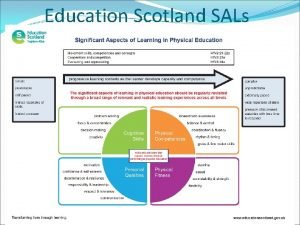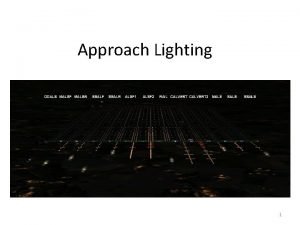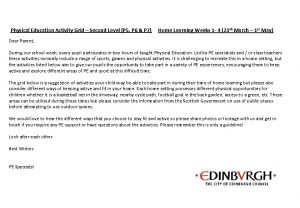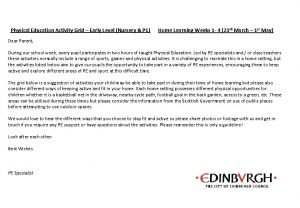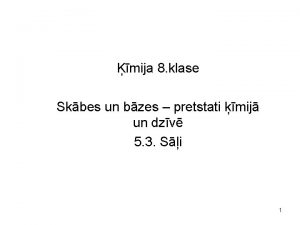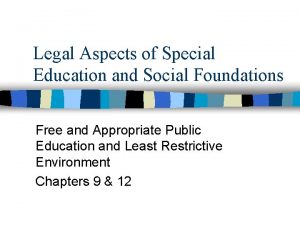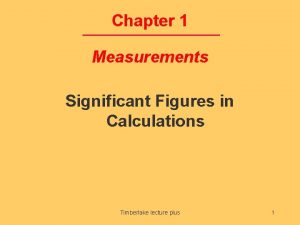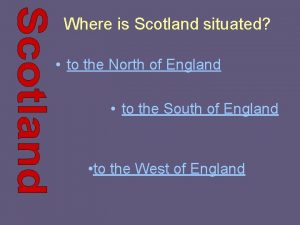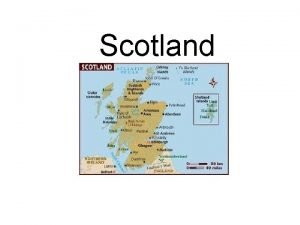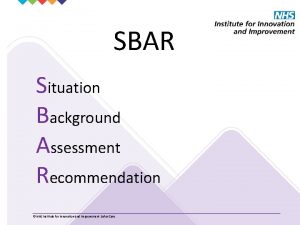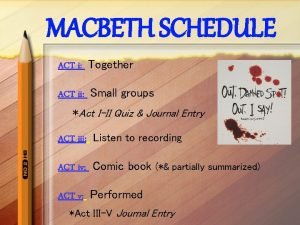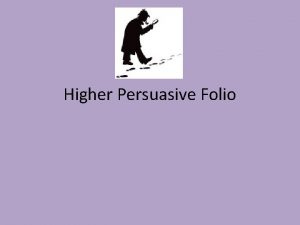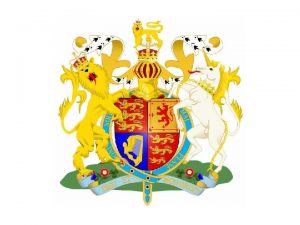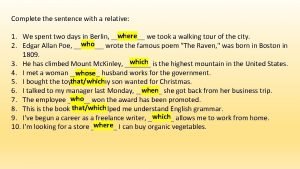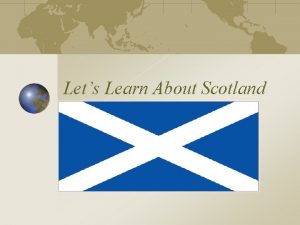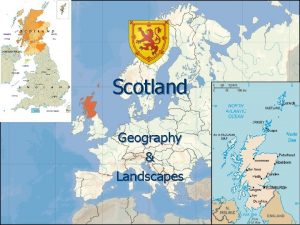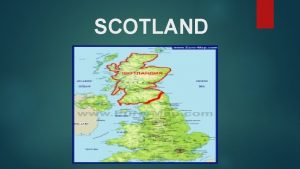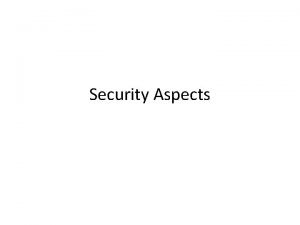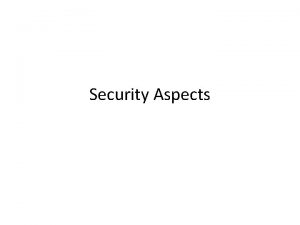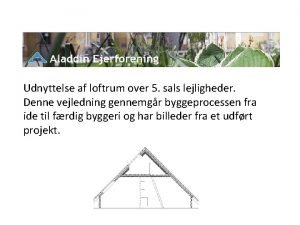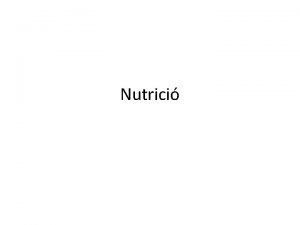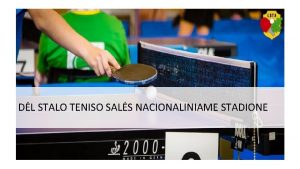Education Scotland SALs Significant Aspects of Learning at































- Slides: 31

Education Scotland SALs

Significant Aspects of Learning at Second Level Learners are supported and encouraged to practise and consolidate movement skills as they learn to move, and adapt and apply these in play, games, modified sports, dance, gymnastics, aquatics and outdoor learning. They are becoming confident in using their nonpreferred hand or foot demonstrating more precision and control. They are refining their movement patterns and sequences demonstrating an understanding of spatial awareness, relationships and rhythm and timing of movement. Learners demonstrate increasing control of their body. They can create, rehearse and perform a broad range of movement skills and sequences with greater control, balance and coordination. They respond to feedback to improve their performance. They reflect on their own performance and observe the performances of others. Using simple, shared criteria, they provide constructive, simple feedback recognising how it contributes to progress and leads to improvement. Learners enjoy participating in moderate to vigorous physical activity. They are able to describe connections between participation in physical activity and health and wellbeing. They explore fitness concepts of stamina, speed, core stability and strength and flexibility and are learning how their bodies respond to different types of exercise. Learners work cooperatively with others in modified sports and other types of physical activity. They contribute constructively to teams, follow basic safety principles and explain the concepts of fair play and sportsmanship. Learners are developing awareness of tactics and positional play. They begin to negotiate and initiate roles within teams, including opportunities for leadership. They are learning that choices people make about participation in physical activity are influenced by factors such as personal preference, time and access to equipment and facilities. They reflect on and describe what influences their participation. They are developing a deeper understanding of people’s varied physical abilities and needs. They know that it may not always be possible to get things right first time and devise, experiment and propose their own learning strategies to solve movement challenges to improve their performance.

Resource Map Use the table below to take you straight to the page you are looking for. Simply look down the table for the concept you wish to teach and click on the link to a specific SAL. Concept SAL SAL Aesthetics Cognitive Phys. Comp. Phys. Fitness Personal Athletics Cognitive Phys. Comp. Phys. Fitness Personal Possession Games Cognitive Phys. Comp. Phys. Fitness Personal Central Net and Wall Cognitive Phys. Comp. Phys. Fitness Personal Striking & Fielding Cognitive Phys. Comp. Phys. Fitness Personal Target Games Cognitive Phys. Comp. Phys. Fitness Personal Outdoor & Adventure Cognitive Phys. Comp. Phys. Fitness Personal Throughout this resource clicking on the home icon will return you to this page.

Aesthetics SAL: Cognitive Skills Second Level HWB 2 -23 a & 2 -24 a Progressive learning contexts as the learner develops capacity & competence INTRODUCE EXPLORE PRACTISE PERFORM REFINE Complex Simple Suggested Learning – reinforce work undertaken at earlier levels Predictable Self Paced Limited repertoire of skills Limited pressure • • • Remember to work safely and listen to instructions Repeat and practise skills on their own or in a sequence. Repeating tasks in the correct sequence Explain how my body works in simple ways during aesthetic activities discussing how strength and flexibility affects performance in aesthetic activities Observe and discuss likeness and differences in performance by observing others using the language used for aesthetics e. g. balance, sequence, rotate Work on the floor and on a variety of apparatus changing direction, speed and level Plan simple sequences of movements using at least 6 shapes / movements using rotation, flight and balance Choose and make decisions about where I am and what I’m doing – recognising factors which can improve my performance Experience concepts such as mirroring, matching, following, leading and working in unison Create new movements and patterns through choice and invention Engage successfully in problem solving tasks (See BMT below) BMT Movement Sequences (4) Making movement numbers Movement Mirror Clap-Clap (thinking) Running Opposites Crossing Arm Pattern Making a movement sentence Copy 4 Tennis Ball Juggling 1 Misdirection Tennis Ball Juggling 2 Unpredictable Externally paced Wide repertoire of skills Pressure of increased variables less time to respond

Aesthetics SAL: Physical Comps Second Level HWB 2 -21 a & 2 -22 a Progressive learning contexts as the learner develops capacity & competence INTRODUCE EXPLORE PRACTISE PERFORM REFINE Complex Simple Suggested Learning (Performed in a variety of indoor and outdoor environments): Predictable Self Paced Limited repertoire of skills Limited pressure General • Show basic control when moving and when still – climb, hang, swing with control • Perform movements on the floor and on a variety of apparatus • Develop and demonstrate a deeper understanding of balance, jumping, turning and being upside down using Where, When and How e. g. Moving in different directions over a mat/apparatus/with music/at different levels Specific • Make my body tense, relaxed, stretched and curled • Roll in different ways and directions • Balance in different ways and hold with poise • Take weight on my hands safely • Perform the 5 basic jumps on the floor and on various apparatus • Turn around and over in different ways (rotate) • Make different shapes with my body when both moving and still • Link 6 skills or more together and repeat e. g. roll forwards, jump with ½ turn then low balance • Perform a range of aesthetic movements with altering speed, direction and level BMT 1, 2, 3 Hop Movement Sentence Arm Fold Jumping Jacks Spot the Dog Knee Accent Alternating Arms Crossing Arms Clap-clap-stamp Copy 4 Opp-Same Step Pattern (4) 2 -2 Foot Pattern Clap-Clap Count 5 jump pattern Touch-tap Clap-Clap (thinking) Movement Mirror Unpredictable Externally paced Wide repertoire of skills Pressure of increased variables less time to respond

Aesthetics SAL: Physical Fitness Second Level HWB 2 -22 a Progressive learning contexts as the learner develops capacity & competence INTRODUCE EXPLORE PRACTISE PERFORM REFINE Complex Simple Suggested Learning – reinforce work undertaken at earlier levels Predictable Self Paced Limited repertoire of skills Limited pressure • Understand talk about the basic concepts of fitness in simple terms and how it affects my ability to perform in aesthetic activities. • Talk about how the body feels – sweaty, puffed out, heart beating faster and what happens when resting. • Participates enthusiastically and sustains energetic levels of play/activity and enjoys the benefits of being active regularly Demonstrate: Stamina Keep going during physically demanding activities Speed Vary the speed of movements whilst demonstrating quality of movement Core stability Maintain balance whether still or moving & Strength Hold my body in a variety of shapes and positions Flexibility Bend and stretch to suit the appropriate skill and task. BMT Jumping Jacks Alternating Arms Count 5 Jump Pattern Spot the Dog Opp-Same Knee Accent 2 -2 Foot Pattern Unpredictable Externally paced Wide repertoire of skills Pressure of increased variables less time to respond

Aesthetics SAL: Personal Qualities Second Level HWB 2 -21 a & 2 -23 a & 2 -24 a Progressive learning contexts as the learner develops capacity & competence INTRODUCE EXPLORE PRACTISE PERFORM REFINE Complex Simple Suggested Learning – reinforce work undertaken at earlier levels Predictable • Work independently, including individually & as part of a group co-operating with others • Talk about my actions, thoughts and feelings Limited repertoire of skills • Encourage people when they are performing • Be responsible and lead by example • Keep trying to improve appreciating the skills necessary for aesthetic activities Limited pressure • Organise myself • Help other people demonstrating respect and tolerance • Enjoy the activity – demonstrating the performance to the class/group • Be persistent and resilient when not achieving instant success • Develop ethos of trust and respect Self Paced BMT – focus on partner working Movement Sequence (4) Running Opposites Movement Sentence Copy 4 Knee Accent Square-Cross Opp-Same 4 Step Patterns Movement Numbers Clap-Clap (thinking) Movement Mirror Unpredictable Externally paced Wide repertoire of skills Pressure of increased variables less time to respond

Athletics SAL: Cognitive Skills Second Level HWB 2 -23 a & 2 -24 a Progressive learning contexts as the learner develops capacity & competence INTRODUCE EXPLORE PRACTISE PERFORM REFINE Complex Simple Predictable Self Paced Limited repertoire of skills Limited pressure Suggested Learning – reinforce work undertaken at earlier levels • Develop the skills needed to help me jump high and long, throw for distance, run fast and for a longer period of time – knowing how these can improve performance • Know the importance of eating right to run, jump and throw well • Explain how my body works during athletic activities naming key muscle groups • Understand the importance of safety procedures. • Observe and discuss likeness and differences by watching others perform using activity specific language • Using a variety of objects/apparatus demonstrate a deeper understanding of movement skills Where, When and How in order to run/jump/throw from a start to finish • Solve more complex problems e. g calculate the speed of running based on time and distance covered. • Begin to make decisions such as when to let the object go, when to run faster or slower, where to take off. • Measure time or record performance independently • Begin to link movements together in a variety of ways e. g. Run & jump, bend & throw, hop, skip and jump • Create own ideas for athletic events and put into practice BMT Movement Sequences (4) Running Opposites Crossing Arm Pattern Making movement numbers Making a movement sentence Square-Cross Movement Mirror Tennis Ball Juggling 1 Misdirection Clap-Clap (thinking) Tennis Ball Juggling 2 Tapping Circles Unpredictable Externally paced Wide repertoire of skills Pressure of increased variables less time to respond

Athletics SAL: Physical Comp Second Level HWB 2 -21 a & 2 -22 a Progressive learning contexts as the learner develops capacity & competence INTRODUCE EXPLORE PRACTISE PERFORM REFINE Complex Simple Suggested Learning – reinforce work undertaken at earlier levels Predictable Unpredictable • Throw different shaped objects at a target using different styles Self Paced • Throw for distance being aware of body parts and positions whilst maintaining balance and control using different techniques e. g. pull or heave Externally paced Limited repertoire of skills • Perform travelling actions in different directions, sharing space safely with others • Vary the pace of actions focusing on the quality of movement Wide repertoire of skills • Use effective techniques whilst running and hurdling Limited pressure • Pace myself over distance • Jump high and jump for distance • Jump using combinations of 1 foot and 2 feet and start to sequence these • Increase the length of time I can run before resting • Highlight importance of rhythm and timing whilst running, jumping or throwing BMT 1, 2, 3 Hop Movement Sentence Arm Fold Jumping Jacks Spot the Dog Knee Accent Alternating Arms Crossing Arms Clap-clap-stamp Copy 4 Opp-Same Step Pattern (4) 2 -2 Foot Pattern Clap-Clap Count 5 jump pattern Touch-tap Clap-Clap (thinking) Movement Mirror Pressure of increased variables less time to respond

Athletics SAL: Physical Fitness Second Level HWB 2 -22 a Progressive learning contexts as the learner develops capacity & competence INTRODUCE EXPLORE PRACTISE PERFORM REFINE Complex Simple Suggested Learning – reinforce work undertaken at earlier levels Predictable Self Paced Limited repertoire of skills Limited pressure • Understand talk about the basic concepts of fitness in simple terms and begin to understand how training can affect my performance in athletics. • Talk about how the body feels – sweaty, puffed out, heart beating faster and what happens when resting. • Participates enthusiastically and sustains energetic levels of play/activity and enjoys the benefits of being active regularly Demonstrate: Stamina Keep going during physically demanding activities Speed Vary the speed of movements whilst demonstrating quality of movement Link with explosive power Strength Maintain balance whether static or moving Hold my body in a variety of shapes and positions Flexibility Bend and stretch to suit the event. BMT Jumping Jacks Alternating Arms 4 Step Pattern Spot the Dog Opp-Same Count 5 Jump Pattern Knee Accent 2 -2 Foot Pattern Running Opp Unpredictable Externally paced Wide repertoire of skills Pressure of increased variables less time to respond

Athletics SAL: Personal Qualities Second Level HWB 2 -21 a & 2 -23 a & 2 -24 a Progressive learning contexts as the learner develops capacity & competence INTRODUCE EXPLORE PRACTISE PERFORM REFINE Complex Simple Suggested Learning – reinforce work undertaken at earlier levels Predictable Self Paced Limited repertoire of skills Limited pressure • Work as part of a team and co-operate with others • Talk about my actions thoughts and feelings • Encourage people when they are performing and appreciate differences in ability • Lead by example • Show motivation by always trying to improve • Organise myself • Enjoy the competitive element of the activity if I win or lose. • Communicate and share ideas with others • Be proud of my efforts and celebrate achievements • Be persistent and motivated to improve performance • Assess myself and my peers and suggest improvements • Perform at my own level BMT – focus on partner working Movement Sequence (4) Running Opposites Movement Sentence Copy 4 Knee Accent Square-Cross Opp-Same 4 Step Patterns Movement Numbers Clap-Clap (thinking) Movement Mirror Unpredictable Externally paced Wide repertoire of skills Pressure of increased variables less time to respond

Possession Games SAL: Cognitive Skills Second Level HWB 2 -23 a & 2 -24 a Progressive learning contexts as the learner develops capacity & competence INTRODUCE EXPLORE PRACTISE PERFORM REFINE Simple Predictable Self Paced Limited repertoire of skills Limited pressure Complex Suggested Learning – reinforce work undertaken at earlier levels • Remember how to score a point and keep score in a variety of games • Remember important rules and understand why they are used • Remember the equipment being used and how to set up if required • Explain how my body works in simple ways during possession game activities using the language of P. E appropriate to my development • Know that space will help me be effective in possession games • Be aware that there are different jobs to do during a game situation e. g. score a goal; mark your man • Experience simple strategies and structures such as attach and defending scenarios • Evaluate and begin to make appropriate decisions when presented with a variety of options • Use cue recognition when moving into space to receive a ball • Evaluate performance and suggest improvements. • Investigate Where, When and How to develop a variety of solutions for maintaining possession (control) of an object e. g. Dribbling an object at various speeds/directions, passing an object fast/slow/hard/soft BMT Movement Sequences (4) Making movement numbers Movement Mirror Clap-Clap (thinking) Running Opposites Crossing Arm Pattern Making a movement sentence Square-Cross Tennis Ball Juggling 1 Misdirection Tennis Ball Juggling 2 Tapping Circles Unpredictable Externally paced Wide repertoire of skills Pressure of increased variables less time to respond

Possession Games SAL: Physical Comps Second Level HWB 2 -21 a & 2 -22 a Progressive learning contexts as the learner develops capacity & competence INTRODUCE EXPLORE PRACTISE PERFORM REFINE Complex Simple Predictable Self Paced Suggested Learning – reinforce work undertaken at earlier levels • Refine my movement skills by focussing on balance, rhythm & timing and finding a space and begin to link these moves together in a variety of ways e. g. Pass and move, dribble and shoot, 3 v 1 • Use both sides of the body and arms and legs in isolation and together Limited repertoire of skills • Chase and tag (get free, mark) in a game scenario e. g. Netball tig, king of the ring • Show different skills such as throwing , catching/receiving, running, jumping, bouncing and dribbling in a practice or small sided and modified game situations. (using a variety of equipment) Limited pressure • Perform skills in simple combined practices, specific to the activity using different sized and shaped equipment e. g. passing and moving, running and tagging , dribble and shoot. • Perform in specific skills practices appropriate to the activity, using different types of equipment in combinations e. g. receive, dribble and shoot; intercept, pass and move. BMT 1, 2, 3 Hop Movement Sentence Arm Fold Jumping Jacks Eyes Open/Closed Knee Accent Alternating Arms Crossing Arms Clap-clap-stamp Ball Exchange Opp-Same Step Pattern (4) 2 -2 Foot Pattern Clap-Clap Count 5 jump pattern Touch-tap High/Low Ball 2 Handed Juggle Movement Mirror Tennis Juggle 1 Tennis Juggle 2 Tennis Juggle 3 Unpredictable Externally paced Wide repertoire of skills Pressure of increased variables less time to respond

Possession Games SAL: Physical Fitness Second Level HWB 2 -22 a Progressive learning contexts as the learner develops capacity & competence INTRODUCE EXPLORE PRACTISE PERFORM REFINE Complex Simple Suggested Learning – reinforce work undertaken at earlier levels Predictable Self Paced Limited repertoire of skills Limited pressure • Understand talk about the basic concepts of fitness in simple terms and how it affects my ability to perform effectively in possession games. • Talk about how the body feels – sweaty, puffed out, heart beating faster and what happens when resting. • Participates enthusiastically and sustains energetic levels of play/activity and enjoys the benefits of being active regularly. Demonstrate: Stamina Keep going during physically demanding activities Speed Vary the speed of movements whilst demonstrating quality of movement Strength Maintain balance whether static or moving Hold my body in a variety of positions Flexibility Bend and stretch to suit the game BMT Jumping Jacks Alternating Arms 4 Step Pattern Spot the Dog Opp-Same Count 5 Jump Pattern Knee Accent 2 -2 Foot Pattern Running Opp Unpredictable Externally paced Wide repertoire of skills Pressure of increased variables less time to respond

Possession Games SAL: Personal Qualities Second Level HWB 2 -21 a & 2 -23 a & 2 -24 a Progressive learning contexts as the learner develops capacity & competence INTRODUCE EXPLORE PRACTISE PERFORM REFINE Complex Simple Suggested Learning – reinforce work undertaken at earlier levels Predictable Self Paced Limited repertoire of skills Limited pressure • Work as part of a team and co-operate with others • Talk about my actions, thoughts and feelings • Encourage people when they are performing appreciating different abilities • Lead by example. • Keep trying to improve and not give up. • Organise myself. • Enjoy the competitive element of the activity if I win or lose. • Communicate and share ideas with others • Be proud of my efforts celebrating achievements • Develop ethos of trust & respect • Assess myself and peers and suggest improvements BMT – focus on partner working Movement Sequence (4) Running Opposites Movement Sentence Copy 4 Knee Accent Square-Cross Opp-Same 4 Step Patterns Movement Numbers Clap-Clap (thinking) Movement Mirror Unpredictable Externally paced Wide repertoire of skills Pressure of increased variables less time to respond

Central Net and Wall SAL: Cognitive Skills Second Level HWB 2 -23 a & 2 -24 a Progressive learning contexts as the learner develops capacity & competence INTRODUCE EXPLORE PRACTISE PERFORM REFINE Complex Simple Predictable Self Paced Limited repertoire of skills Limited pressure Suggested Learning – reinforce work undertaken at earlier levels • Remember how to score a point and keep score • Apply important rules and understand why they are used • Explain how my body works during central net and wall game activities using the language of P. E appropriate to my development • Know that space will help me be effective in central net and wall games • Understand that there are different jobs to do during a game situation e. g. sharing the court with a team mate so that there are no big empty spaces • Analyse when a number of options are available and make the appropriate decisions and choices • Start to link Where, When and How movements in order to prevent return e. g. A soft and low shot over the net using hands/racquet/bat, a strong diagonal push into space • Use cue recognition and evaluation to remain effective during a game situation (defending/attacking) • Create within the context of a game e. g. tactics, strategies and own games. BMT Movement Sequences (4) Making movement numbers Movement Mirror Clap-Clap (thinking) Running Opposites Crossing Arm Pattern Making a movement sentence Square-Cross Tennis Ball Juggling 1 Misdirection Tennis Ball Juggling 2 Tapping Circles Unpredictable Externally paced Wide repertoire of skills Pressure of increased variables less time to respond

Central Net and Wall SAL: Physical Comps Second Level HWB 2 -21 a & 2 -22 a Progressive learning contexts as the learner develops capacity & competence INTRODUCE EXPLORE PRACTISE PERFORM REFINE Complex Simple Suggested Learning – reinforce work undertaken at earlier levels Predictable Self Paced Limited repertoire of skills Limited pressure General • Moving in and around the playing area in different ways and directions within a restricted space (cones, markers, lines and mats) • Using both sides of the body and arms and legs together Specific • Control power and accuracy when performing a range of different shots at various speeds and heights • Demonstrate simple target practice games with various objects • Perform in specific skills combination practices appropriate to the activity, using different equipment e. g. feed, move and volley pass; prepare, move and strike a return; rebound, move and spike. • Develop ways of moving a variety of equipment, using Where, When and How, in a restricted space e. g. Moving a ball using with a soft touch moving a shuttlecock up in the air or down to the ground, moving a bean bag high and low over a bench • Demonstrate effective coordination when in practice and game situations BMT 1, 2, 3 Hop Movement Sentence Arm Fold Jumping Jacks Eyes Open/Closed Knee Accent Alternating Arms Crossing Arms Clap-clap-stamp Ball Exchange Opp-Same Step Pattern (4) 2 -2 Foot Pattern Clap-Clap Count 5 jump pattern Touch-tap High/Low Ball 2 Handed Juggle Movement Mirror Tennis Juggle 1 Tennis Juggle 2 Tennis Juggle 3 Unpredictable Externally paced Wide repertoire of skills Pressure of increased variables less time to respond

Central Net and Wall SAL: Physical Fitness Second Level HWB 2 -22 a Progressive learning contexts as the learner develops capacity & competence INTRODUCE EXPLORE PRACTISE PERFORM REFINE Complex Simple Suggested Learning – reinforce work undertaken at earlier levels Predictable Self Paced Limited repertoire of skills Limited pressure • Understand talk about the basic concepts of fitness in simple terms and how it affects my ability to perform effectively in central net and wall games. • Talk about how the body feels – sweaty, puffed out, heart beating faster and what happens when resting. • Participates enthusiastically and sustains energetic levels of play/activity and enjoys the benefits of being active regularly. Stamina Keep going during physically demanding activities Speed Vary the speed of movements whilst demonstrating quality of movement Maintain balance whether static or moving Hold my body in a variety of positions BMT Jumping Jacks Alternating Arms 4 Step Pattern Bend and stretch to suit the game. Spot the Dog Opp-Same Count 5 Jump Pattern Externally paced Wide repertoire of skills Pressure of increased variables less time to respond Demonstrate: Core stability & Strength Flexibility Unpredictable Knee Accent 2 -2 Foot Pattern Running Opp

Central Net and Wall SAL: Personal Qualities Second Level HWB 2 -21 a & 2 -23 a & 2 -24 a Progressive learning contexts as the learner develops capacity & competence INTRODUCE EXPLORE PRACTISE PERFORM REFINE Complex Simple Suggested Learning – reinforce work undertaken at earlier levels Predictable Self Paced Limited repertoire of skills Limited pressure • Work as part of a team and co-operate with others • Talk about my actions, thoughts and feelings • Appreciate the qualities unique to net games (volleyball, badminton and tennis) and team activities. • Encourage people when they are performing • Assess and evaluate myself and my peers and suggest improvements • Lead by example. • Keep trying to improve and not give up. • Organise myself. • Enjoy the competitive element of the activity if I win or lose. • Develop ethos of trust and respect BMT – focus on partner working Movement Sequence (4) Running Opposites Movement Sentence Copy 4 Knee Accent Square-Cross Opp-Same 4 Step Patterns Movement Numbers Clap-Clap (thinking) Movement Mirror Unpredictable Externally paced Wide repertoire of skills Pressure of increased variables less time to respond

Striking and Fielding SAL: Cognitive Skills Second Level HWB 2 -23 a & 2 -24 a Progressive learning contexts as the learner develops capacity & competence INTRODUCE EXPLORE PRACTISE PERFORM REFINE Complex Simple Suggested Learning – reinforce work undertaken at earlier levels Predictable Self Paced Limited repertoire of skills Limited pressure • Remember how to score a point and keep score • Apply important rules and understand why they are used • Remember the equipment being used and how to set up if required • Explain how my body works during striking and fielding activities using the language of P. E appropriate to my development • Know that space will help me be effective in striking and fielding activities • Understand that there are different jobs to do during a game situation e. g. batter, bowler, fielder • Use cue recognition and evaluation to remain effective during a game situation (defending/attacking). • Analyse when a number of options are available and make the appropriate decisions and choices. • Create within the context of a game e. g. tactics, strategies and own games. BMT Movement Sequences (4) Making movement numbers Movement Mirror Clap-Clap (thinking) Running Opposites Crossing Arm Pattern Making a movement sentence Square-Cross Tennis Ball Juggling 1 Misdirection Tennis Ball Juggling 2 Tapping Circles Unpredictable Externally paced Wide repertoire of skills Pressure of increased variables less time to respond

Striking and Fielding SAL: Physical Comps Second Level HWB 2 -21 a & 2 -22 a Progressive learning contexts as the learner develops capacity & competence INTRODUCE EXPLORE PRACTISE PERFORM REFINE Complex Simple Suggested Learning – reinforce work undertaken at earlier levels Predictable General Unpredictable Self Paced • Refine my movement skills by focussing on balance & control, rhythm & timing and coordination & fluency Externally paced Limited repertoire of skills • Move different parts of my body in isolation and together co-ordinating right and left & upper and lower body parts to move in a controlled way. Wide repertoire of skills Limited pressure Specific • Catching , receiving and stopping an object. • Showing co-ordination when striking (hand, foot, bat) and throwing in game situations. • Aiming for a partner and hitting a target frequently • Performing in specific combination skills practices appropriate to the activity, using different sizes and shapes of equipment e. g. strike and run; run, intercept and throw; static and dynamic target practices. BMT 1, 2, 3 Hop Movement Sentence Arm Fold Jumping Jacks Eyes Open/Closed Knee Accent Alternating Arms Crossing Arms Clap-clap-stamp Ball Exchange Opp-Same Step Pattern (4) 2 -2 Foot Pattern Clap-Clap Count 5 jump pattern Touch-tap High/Low Ball 2 Handed Juggle Movement Mirror Tennis Juggle 1 Tennis Juggle 2 Tennis Juggle 3 Pressure of increased variables less time to respond

Striking and Fielding SAL: Physical Fitness Second Level HWB 2 -22 a Progressive learning contexts as the learner develops capacity & competence INTRODUCE EXPLORE PRACTISE PERFORM REFINE Complex Simple Suggested Learning – reinforce work undertaken at earlier levels Predictable Self Paced Limited repertoire of skills Limited pressure • Understand talk about the basic concepts of fitness in simple terms and how it affects my ability to perform effectively in striking and fielding activities. • Talk about how the body feels – sweaty, puffed out, heart beating faster and what happens when resting. • Participates enthusiastically and sustains energetic levels of play/activity and enjoys the benefits of being active regularly. Stamina Keep going during physically demanding activities Speed Vary the speed of movements whilst demonstrating quality of movement Maintain balance whether static or moving Hold my body in a variety of positions Bend and stretch to suit the game. BMT Jumping Jacks Alternating Arms 4 Step Pattern Spot the Dog Opp-Same Count 5 Jump Pattern Externally paced Wide repertoire of skills Pressure of increased variables less time to respond Demonstrate: Core stability & Strength Flexibility Unpredictable Knee Accent 2 -2 Foot Pattern Running Opp

Striking and Fielding SAL: Personal Qualities Second Level HWB 2 -21 a & 2 -23 a & 2 -24 a Progressive learning contexts as the learner develops capacity & competence INTRODUCE EXPLORE PRACTISE PERFORM REFINE Complex Simple Suggested Learning – reinforce work undertaken at earlier levels Predictable Self Paced Limited repertoire of skills Limited pressure • Work as part of a team and co-operate with others • Talk about my actions, thoughts and feelings • Encourage people when they are performing • Lead by example • Keep trying to improve and not give up • Organise myself • Enjoy the competitive element of the activity if I win or lose • Assess and evaluate myself and my peers and suggest improvements • Develop ethos of trust and respect • Perform at my own level and appreciate differences in ability within the group. BMT – focus on partner working Movement Sequence (4) Running Opposites Movement Sentence Copy 4 Knee Accent Square-Cross Opp-Same 4 Step Patterns Movement Numbers Clap-Clap (thinking) Movement Mirror Unpredictable Externally paced Wide repertoire of skills Pressure of increased variables less time to respond

Target Games SAL: Cognitive Skills Second Level HWB 2 -23 a & 2 -24 a Progressive learning contexts as the learner develops capacity & competence INTRODUCE EXPLORE PRACTISE PERFORM REFINE Complex Simple Suggested Learning – reinforce work undertaken at earlier levels Predictable Self Paced Limited repertoire of skills Limited pressure • Remember how to score a point and keep score • Apply important rules and understand why they are used. • Remember the equipment being used and how to set up if required • Explain how my body works in simple ways specifically for target games using the language of P. E appropriate to my development • Experiment ways of sending objects to reach/hit/knock down a target e. g. throwing, striking, kicking, punting, rolling etc • Recognise the importance of particular movements, or actions in a sequence that leads to a successful performance • Apply simple strategies and structures such as sound decision making and cue recognition • Analyse when a number of options are available and make the appropriate decisions and choices. • Create within the context of a game e. g. tactics, strategies and own games. BMT Movement Sequences (4) Making movement numbers Movement Mirror Clap-Clap (thinking) Running Opposites Crossing Arm Pattern Making a movement sentence Square-Cross Tennis Ball Juggling 1 Misdirection Tennis Ball Juggling 2 Tapping Circles Unpredictable Externally paced Wide repertoire of skills Pressure of increased variables less time to respond

Target Games SAL: Physical Comps Second Level HWB 2 -21 a & 2 -22 a Progressive learning contexts as the learner develops capacity & competence INTRODUCE EXPLORE PRACTISE PERFORM REFINE Complex Simple Predictable Suggested Learning – reinforce work undertaken at earlier levels • Refine my movement skills by focussing on balance & control, rhythm & timing and coordination & fluency Unpredictable Self Paced • Move different parts of my body in isolation and together co-ordinating right and left & upper and lower body parts to move in a controlled way. Externally paced Limited repertoire of skills • Catch a variety of objects and send them back to hit a target consistently Wide repertoire of skills Limited pressure • Experiment ways of sending objects to reach/hit/knock down a target e. g. throwing, striking, kicking, punting, rolling etc • Throw/catch using underarm and overarm technique • Demonstrate throwing, catching, rolling, striking and stopping activities using a variety of equipment • Perform skills in simple combined practice exercises specific to the activity using different sized and shaped equipment • Performing in specific combination skills practices appropriate to the activity, using different sizes and shapes of equipment e. g. run, intercept and throw; static and dynamic target practices. BMT 1, 2, 3 Hop Movement Sentence Arm Fold Jumping Jacks Eyes Open/Closed Knee Accent Alternating Arms Crossing Arms Clap-clap-stamp Ball Exchange Opp-Same Step Pattern (4) 2 -2 Foot Pattern Clap-Clap Count 5 jump pattern Touch-tap High/Low Ball 2 Handed Juggle Movement Mirror Tennis Juggle 1 Tennis Juggle 2 Tennis Juggle 3 Pressure of increased variables less time to respond

Target Games SAL: Physical Fitness Second Level HWB 2 -22 a Progressive learning contexts as the learner develops capacity & competence INTRODUCE EXPLORE PRACTISE PERFORM REFINE Complex Simple Suggested Learning – reinforce work undertaken at earlier levels Predictable Self Paced Limited repertoire of skills Limited pressure • Understand talk about the basic concepts of fitness in simple terms and how it affects my ability to perform effectively in target games. • Talk about how the body feels – sweaty, puffed out, heart beating faster and what happens when resting. • Participates enthusiastically and sustains energetic levels of play/activity and enjoys the benefits of being active regularly. Stamina Keep going during physically demanding activities Speed Vary the speed of movements whilst demonstrating quality of movement Core stability Maintain balance whether static or moving & Strength Hold my body in a variety of positions Bend and stretch to suit the game. BMT Jumping Jacks Alternating Arms 4 Step Pattern Spot the Dog Opp-Same Count 5 Jump Pattern Externally paced Wide repertoire of skills Pressure of increased variables less time to respond Demonstrate: Flexibility Unpredictable Knee Accent 2 -2 Foot Pattern Running Opp

Target Games SAL: Personal Qualities Second Level HWB 2 -21 a & 2 -23 a & 2 -24 a Progressive learning contexts as the learner develops capacity & competence INTRODUCE EXPLORE PRACTISE PERFORM REFINE Complex Simple Suggested Learning – reinforce work undertaken at earlier levels Predictable Self Paced Limited repertoire of skills Limited pressure • Work as part of a team and co-operate with others • Talk about my actions, thoughts and feelings • Encourage people when they are performing • Keep trying to improve and not give up • Enjoy the competitive element of the activity if I win or lose • Develop ethos of trust & respect • Describes factors that affect and influence participation e. g. attitude, access • Assess and evaluate myself and my peers and suggest improvements BMT – focus on partner working Movement Sequence (4) Running Opposites Movement Sentence Copy 4 Knee Accent Square-Cross Opp-Same 4 Step Patterns Movement Numbers Clap-Clap (thinking) Movement Mirror Unpredictable Externally paced Wide repertoire of skills Pressure of increased variables less time to respond

Outdoor and Adventure SAL: Cognitive Skills Second Level HWB 2 -23 a & 2 -24 a Progressive learning contexts as the learner develops capacity & competence INTRODUCE EXPLORE PRACTISE PERFORM REFINE Complex Simple Suggested Learning – reinforce work undertaken at earlier levels Predictable Self Paced Limited repertoire of skills Limited pressure • Focus & concentrate on important information remembering more complex instructions • Makes clear decisions when presented with a variety of options that improves performance • Manages some impulse responses to concentrate on the task filtering out distractions • Tasks should involve an opportunity for engagement in simple problem solving exercises and promotion of creative solution strategies. • Draw on some prior knowledge to work out the order for dealing quickly with a series of tasks • Focus attention when working in more demanding situations such as working with a partner or in a small group • Plans and creates a series of three or more actions in order to address simple movement challenges. BMT Movement Sequences (4) Making movement numbers Movement Mirror Clap-Clap (thinking) Running Opposites Crossing Arm Pattern Making a movement sentence Square-Cross Tennis Ball Juggling 1 Misdirection Tennis Ball Juggling 2 Tapping Circles Unpredictable Externally paced Wide repertoire of skills Pressure of increased variables less time to respond

Outdoor and Adventure SAL: Physical Comps Second Level HWB 2 -21 a & 2 -22 a Progressive learning contexts as the learner develops capacity & competence INTRODUCE EXPLORE PRACTISE PERFORM REFINE Simple Predictable Self Paced Limited repertoire of skills Limited pressure Suggested Learning – reinforce work undertaken at earlier levels • Moving in around the playing area in different ways and directions • Moves and adopts body positions effectively in a variety of challenging situations • Balance on different parts of my body + maintain balance whether still or moving, hold a steady balance in various shapes • Perform tasks with increasing coordination and fluency. Focus on the quality of movements. • As children perform tasks take advantage of opportunities to work on gross and fine motor skills. BMT 1, 2, 3 Hop Movement Sentence Arm Fold Jumping Jacks Eyes Open/Closed Knee Accent Alternating Arms Crossing Arms Clap-clap-stamp Ball Exchange Opp-Same Step Pattern (4) 2 -2 Foot Pattern Clap-Clap Count 5 jump pattern Touch-tap High/Low Ball 2 Handed Juggle Movement Mirror Tennis Juggle 1 Tennis Juggle 2 Tennis Juggle 3 Complex Unpredictable Externally paced Wide repertoire of skills Pressure of increased variables less time to respond

Outdoor and Adventure SAL: Physical Fitness Second Level HWB 2 -22 a Progressive learning contexts as the learner develops capacity & competence INTRODUCE EXPLORE PRACTISE PERFORM REFINE Complex Simple Suggested Learning – reinforce work undertaken at earlier levels Predictable Self Paced Limited repertoire of skills Limited pressure • Understand talk about the basic concepts of fitness in simple terms and how it affects my ability to perform effectively in the outdoor environment. • Talk about how the body feels – sweaty, puffed out, heart beating faster and what happens when resting. • Participates enthusiastically and sustains energetic levels of play/activity and enjoys the benefits of being active regularly. Speed Keep going during physically demanding activities Vary the speed of movements whilst demonstrating quality of movement Strength Maintain balance whether static or moving Hold my body in a variety of positions Flexibility Bend and stretch to suit outdoor activities BMT Jumping Jacks Alternating Arms 4 Step Pattern Spot the Dog Opp-Same Count 5 Jump Pattern Externally paced Wide repertoire of skills Pressure of increased variables less time to respond Demonstrate: Stamina Unpredictable Knee Accent 2 -2 Foot Pattern Running Opp

Outdoor and Adventure SAL: Personal Qualities Second Level HWB 2 -21 a & 2 -23 a & 2 -24 a Progressive learning contexts as the learner develops capacity & competence INTRODUCE EXPLORE PRACTISE PERFORM REFINE Complex Simple Suggested Learning – reinforce work undertaken at earlier levels Predictable Self Paced Limited repertoire of skills Limited pressure • Outdoor environments are great for promoting a team building ethos. • Work as part of a team and co-operate with others • Talk about my actions, thoughts and feelings • Encourage people when they are performing • Keep trying to improve and not give up • Enjoy the activity if I win or lose. • Develop ethos of trust and respect • Describes factors that affect and influence participation e. g. attitude, access • Assess and evaluate myself and my peers and suggest improvements BMT – focus on partner working Movement Sequence (4) Running Opposites Movement Sentence Copy 4 Knee Accent Square-Cross Opp-Same 4 Step Patterns Movement Numbers Clap-Clap (thinking) Movement Mirror Unpredictable Externally paced Wide repertoire of skills Pressure of increased variables less time to respond
 Sals physical education
Sals physical education Sals pe scotland
Sals pe scotland Sals physical education
Sals physical education Alsf 2 lighting system
Alsf 2 lighting system Pe sals
Pe sals Physical activity grid
Physical activity grid Sals
Sals Hlorūdeņražskābe
Hlorūdeņražskābe Education scotland play pedagogy toolkit
Education scotland play pedagogy toolkit Gillian hamilton
Gillian hamilton Sexual health and relationships education scotland
Sexual health and relationships education scotland Learning link scotland
Learning link scotland Irving isd v tatro
Irving isd v tatro Cuadro comparativo de e-learning
Cuadro comparativo de e-learning Learning significant figures
Learning significant figures Wisconsin in scotland
Wisconsin in scotland Scotland is situated
Scotland is situated Medical and dental defence union of scotland
Medical and dental defence union of scotland National risk and resilience unit scotland
National risk and resilience unit scotland Positive impacts of tourism in scotland
Positive impacts of tourism in scotland Is scotland a country
Is scotland a country Scotland is divided into
Scotland is divided into Situation-background-assessment-recommendation
Situation-background-assessment-recommendation Pews chart 1-4
Pews chart 1-4 Major cities in scotland map
Major cities in scotland map Gulf stream scotland palm trees
Gulf stream scotland palm trees Chanans scotland
Chanans scotland Macbeth map
Macbeth map Higher persuasive essay examples
Higher persuasive essay examples Falls prevention scotland
Falls prevention scotland Angles in scotland
Angles in scotland Last year we spent our holiday in scotland
Last year we spent our holiday in scotland

